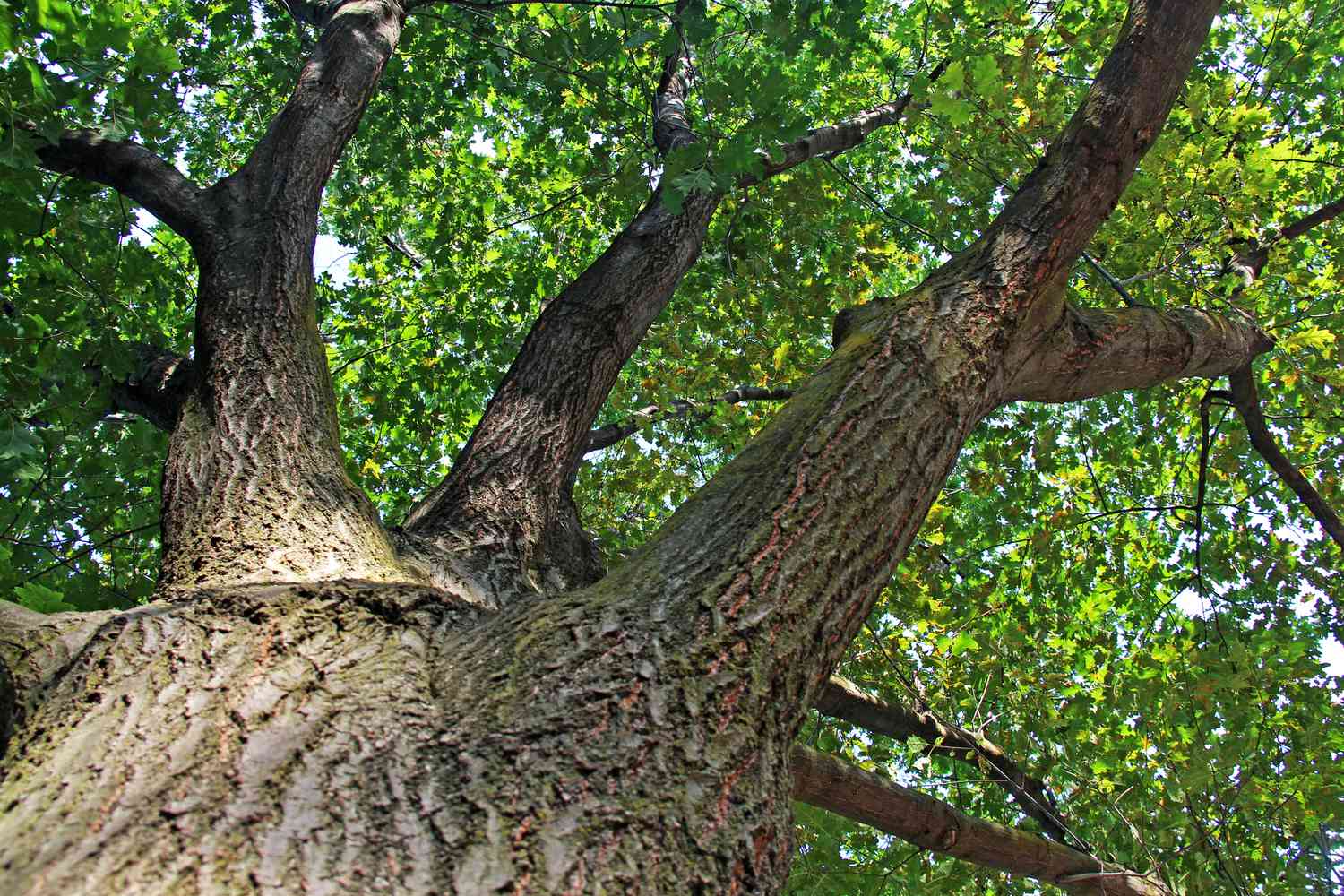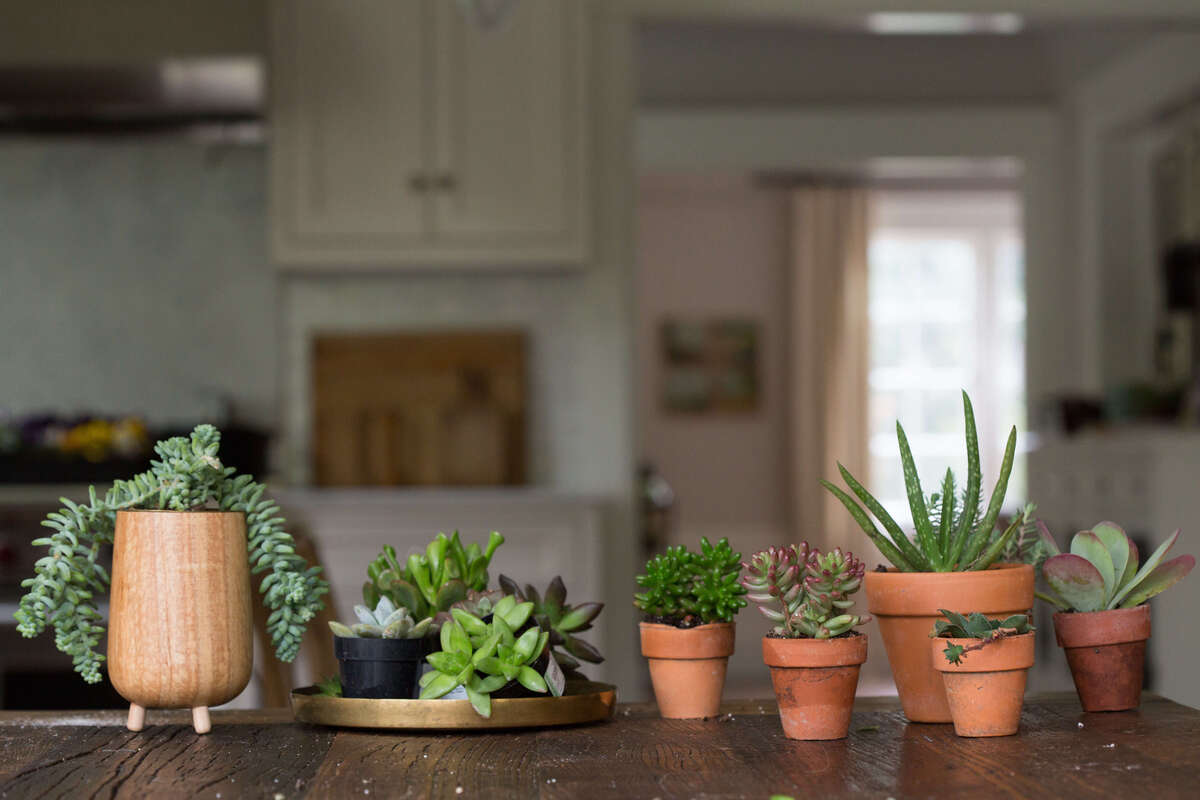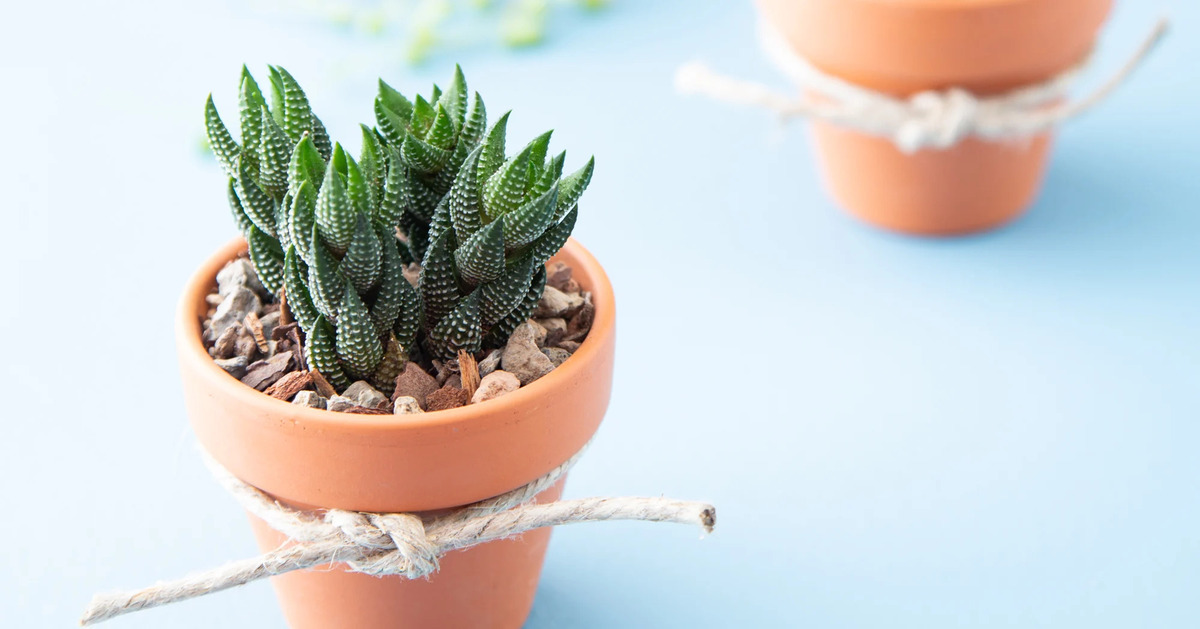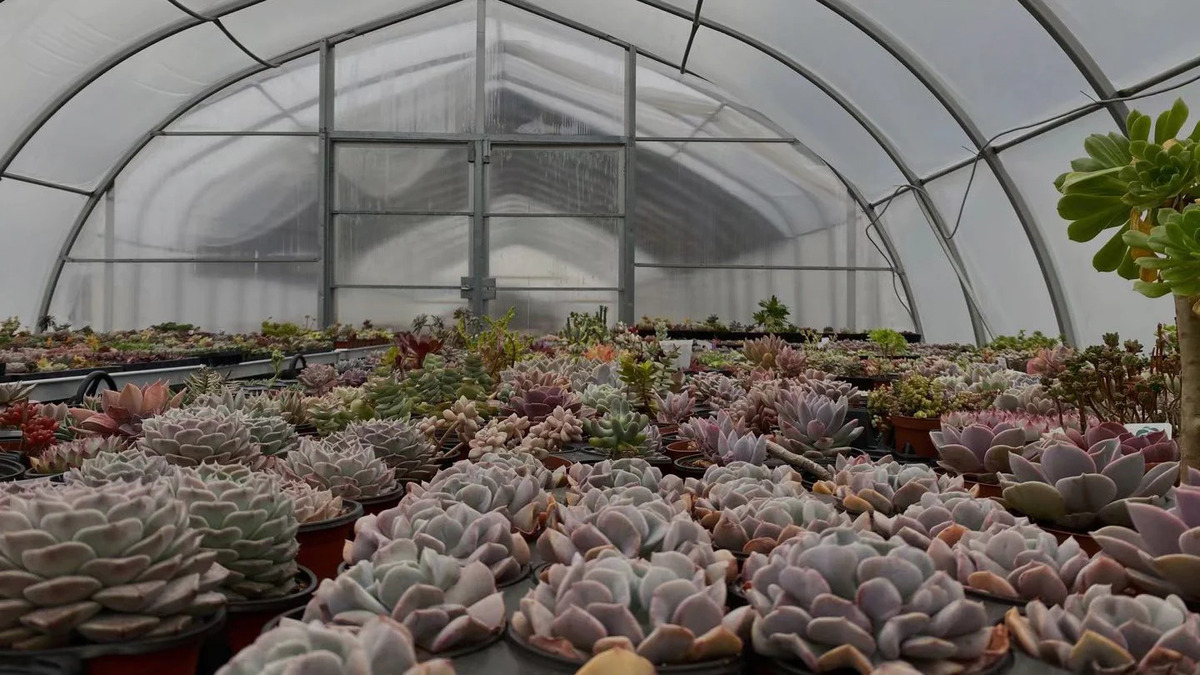Home>Gardening Tips and Tricks>Problem Solving>Where Did Succulents Come From
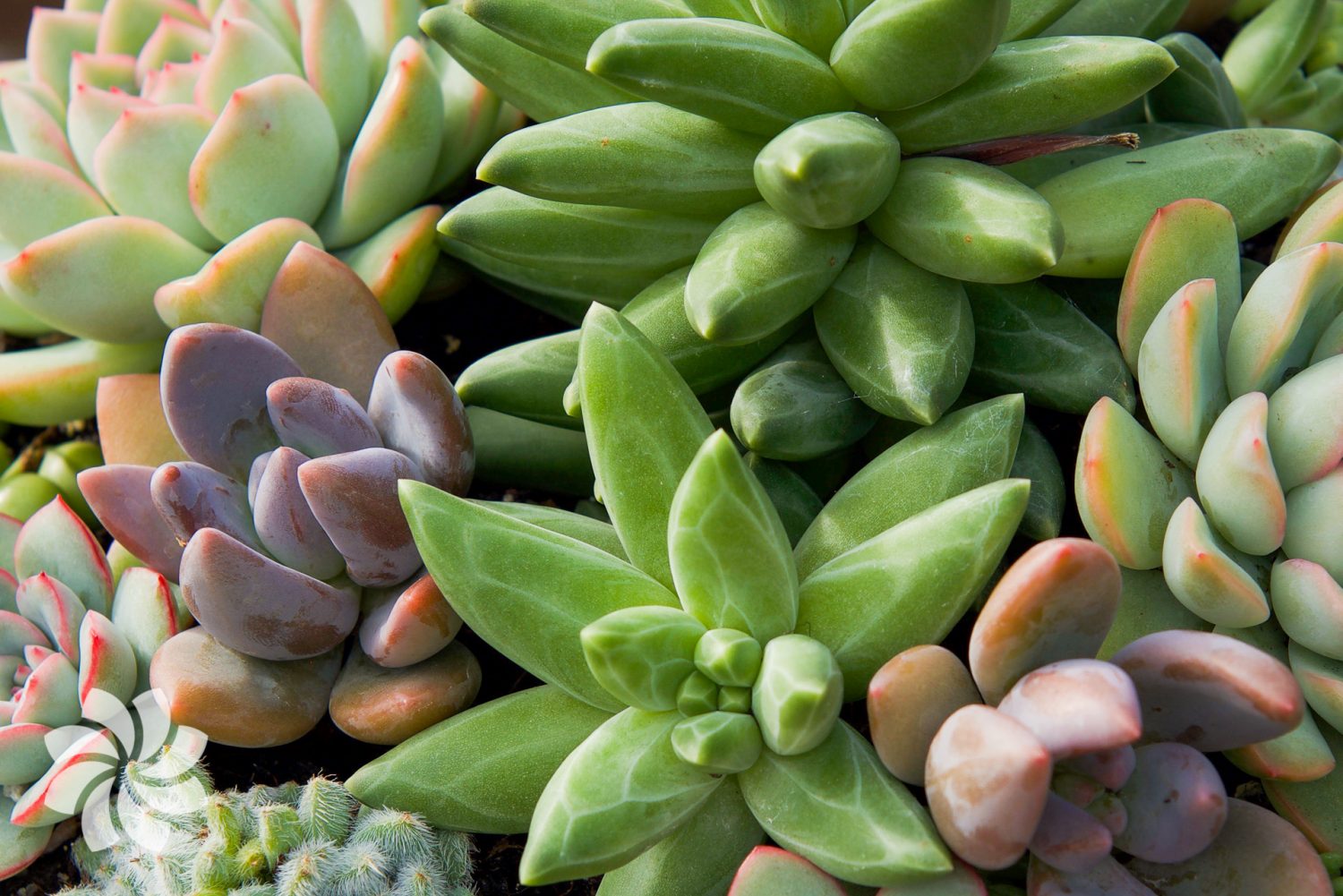

Problem Solving
Where Did Succulents Come From
Modified: February 9, 2024
Discover the origins of succulents and understand their problem-solving abilities. Explore where succulents come from and how they can aesthetically enhance your space.
(Many of the links in this article redirect to a specific reviewed product. Your purchase of these products through affiliate links helps to generate commission for Chicagolandgardening.com, at no extra cost. Learn more)
Table of Contents
Introduction
Succulents have become incredibly popular in recent years, adorning countless homes, gardens, and social media feeds. These fascinating plants have captured the hearts of plant enthusiasts and interior designers alike, with their unique and striking appearance. But have you ever wondered where these stunning succulents actually come from?
To understand their origins, we need to dive into the evolution and natural habitats of succulent plants. Succulents have adapted to thrive in arid and semi-arid environments, where water is scarce. They have developed the unique ability to store water in their leaves, stems, or roots, allowing them to survive in harsh conditions where other plants struggle.
The evolution of succulents can be traced back millions of years, as plants adapted to survive in deserts, coastal regions, and rocky terrains. Over time, succulents have spread across the globe, establishing their presence in diverse ecosystems. From the deserts of North and South America to the arid regions of Africa and the lush landscapes of Asia and Australia, succulents have truly made their mark.
In this article, we will take a journey around the world to explore the origins and evolution of succulents. We will delve into the unique characteristics of succulents found in each continent, discussing their distribution, habitats, and common species. Whether you are a succulent enthusiast looking to expand your knowledge or simply curious about these fascinating plants, join us as we uncover the secrets of succulents.
So, sit back, relax, and let’s embark on a botanical adventure to unravel the mysteries of where succulents come from and how they have found their way into our hearts and homes.
Evolution and Origins of Succulents
The evolution of succulents spans millions of years and is closely intertwined with the development of dry and arid climates. These unique plants have evolved specialized adaptations to survive in environments where water is scarce. Let’s take a closer look at the origins of succulents and how they have evolved over time.
Scientists believe that succulents first emerged during the late Cretaceous period, around 65 million years ago. This was a time when the Earth underwent significant changes, including the formation of arid and desert areas. As the climate became drier, plants faced the challenge of conserving water and adapting to survive.
One of the key adaptations of succulents is their ability to store water in various parts of the plant, such as their fleshy leaves, stems, or roots. This water storage mechanism allows them to survive prolonged periods of drought, making them well-suited for arid environments. Additionally, succulents have evolved thick waxy coatings on their leaves, known as cuticles, to reduce water loss through evaporation.
The exact origins of succulents are difficult to pinpoint, as they have evolved independently in different regions of the world. However, it is believed that their evolution started in areas with limited water availability, such as the deserts of North America, South Africa, and Central America.
North America is home to some of the most iconic succulent species, such as the Aloe, Agave, and Yucca. These plants have thrived in the dry landscapes of the southwestern United States and Mexico. Their presence in these regions dates back thousands of years, and they are deeply rooted in the culture and traditions of the local communities.
In South America, succulents have also flourished in arid habitats like the Atacama Desert in Chile and the coastal regions of Peru. Cacti, such as the iconic Saguaro and Prickly Pear, are native to this continent and have become synonymous with the vibrant landscapes of the Andes.
Africa boasts a rich diversity of succulents, particularly in the arid regions of Namibia and South Africa. The succulent-rich region of the Western Cape in South Africa is a biodiversity hotspot, home to unique species like the Hoodia and Lithops. These plants have developed fascinating adaptations to survive in the harsh desert environment.
The continent of Asia is not often associated with succulents, but several species can be found in countries like China and India. The Haworthia and Crassula are among the succulents native to this region, adapted to arid as well as subtropical climates.
Australia, known for its diverse flora, also has its share of succulents. The Euphorbia and Aloe vera are among the succulent species found in this continent, thriving in the arid interior regions.
Through the process of natural selection, succulents have evolved in various parts of the world, adapting to survive in arid and semi-arid environments. Their impressive water storage abilities, reduced leaf surfaces, and specialized photosynthesis processes have made them masters of survival in harsh conditions.
In the next sections, we will explore the unique characteristics and habitats of succulents in each continent, shedding light on their adaptability and fascinating evolutionary history.
Succulents in North America
North America is a treasure trove of succulent diversity, with a wide range of species that have adapted to thrive in the arid and desert landscapes of the region. Let’s explore some of the iconic succulents that call North America home.
The deserts of the southwestern United States and Mexico are renowned for their succulent-rich ecosystems. One of the most well-known succulent groups in North America is the Agave family, which includes the striking Agave americana, commonly known as the Century Plant. This large succulent with its spiky leaves and tall flower stalk is an iconic symbol of the desert. Agave plants have the ability to store water in their leaves, allowing them to survive in arid conditions for long periods.
Another notable succulent in North America is the Yucca plant, known for its dramatic sword-like leaves and impressive flower spikes. Yucca gloriosa, Yucca filamentosa, and Yucca brevifolia, also known as the Joshua Tree, are native to this continent. The Joshua Tree, in particular, has become an emblem of the arid landscapes of the American Southwest.
Cacti are also abundant in North America, with numerous species found in the region. The iconic Saguaro cactus (Carnegiea gigantea) is a symbol of the desert, often depicted in movies and artwork. This towering cactus with its distinctive arms can live for hundreds of years and serves as a crucial habitat for various desert creatures.
The Prickly Pear cactus (Opuntia spp.) is another common sight in the deserts of North America. This cactus is cherished not only for its attractive pads but also for its edible fruits, known as tunas. The succulent pads and vibrant flowers of the Prickly Pear add a touch of beauty to the otherwise harsh desert landscapes.
In addition to the Agave, Yucca, and cacti, North America boasts other succulent species such as Aloe vera, Dudleya, and Sedum. Aloe vera, renowned for its healing properties, is native to the southern regions of the United States and Mexico. Dudleya is a genus of succulent plants found along the western coasts of North America, with species like Dudleya brittonii and Dudleya caespitosa showcasing a variety of striking leaf colors and formations. Sedum, often referred to as stonecrop, includes a wide range of succulent species that are known for their hardiness and adaptability.
The succulent-rich landscapes of North America have not only served as a source of inspiration for artists and photographers but have also played a significant role in the cultural traditions of indigenous communities. Many Native American tribes have utilized succulents for their medicinal properties, food, and fiber.
With their ability to withstand harsh conditions and their stunning beauty, succulents of North America continue to captivate plant enthusiasts and nature lovers around the world, showcasing the resilience and adaptability of these remarkable plants.
Succulents in South America
South America is home to a diverse array of succulent plants, with many species thriving in the arid and coastal regions of the continent. Let’s explore some of the fascinating succulents that call South America their natural habitat.
One of the most iconic succulents in South America is the cactus. The continent hosts a wide variety of cacti species, each with its unique adaptations to survive in arid conditions. The Andes Mountains, a prominent feature of South America, are home to several unique cactus species, including the majestic Echinopsis species and the Gymnocalycium.
The Echinopsis, commonly known as the Easter Lily cactus, produces large and stunning flowers that bloom for a short period, creating a breathtaking spectacle. The Gymnocalycium, on the other hand, is known for its small and globular shape, making it a popular choice among collectors.
South America is also home to the Pereskia genus, which includes the Pereskia grandifolia and Pereskia aculeata. These succulents stand out among their relatives as they have retained some characteristics of their ancestral non-succulent plants. They possess large leaves and woody stems, distinguishing them from typical succulents.
Another notable succulent found in South America is the Kalanchoe, a genus known for its beautiful flowering plants. Kalanchoe blossfeldiana, with its vibrant and long-lasting flowers, is a popular choice for gardeners and indoor plant enthusiasts. The Kalanchoe pinnata, commonly known as the “Mother of Thousands,” has unique plantlets that grow along the edges of its leaves, resulting in a visually striking appearance.
The genus Lithops, also known as living stones, can be found in the arid regions of southern Africa, including parts of South America. These fascinating succulents have evolved to resemble stones, blending in with their surroundings as a form of camouflage. Lithops are renowned for their ability to store water in their thick, fleshy leaves, allowing them to survive in the harshest of conditions.
South America is also home to various species of the Stapelia genus, commonly known as carrion flowers. These succulents produce unique star-shaped flowers that emit a strong odor resembling rotting flesh, attracting flies for pollination. The Stapelia gigantea, with its large and impressive flowers, is a popular choice among succulent enthusiasts.
The succulent-rich coastal regions of Peru are known for their native species such as the Senecio radicans, commonly referred to as “String of Bananas” due to its cascading, banana-shaped leaves. Crassula ovata, also known as the “Jade Plant,” is native to South Africa but has found a home in South America as well, often grown as a popular houseplant.
The rich biodiversity of South America makes it a prime location for succulents to flourish. Whether thriving in the arid deserts or the coastal regions, succulents in South America showcase the remarkable adaptations and stunning beauty that have captivated plant enthusiasts around the world.
Succulents in Africa
Africa is a continent rich in succulent diversity, with a wide variety of unique and fascinating species that have adapted to survive in its diverse landscapes. From the arid deserts to the rocky outcrops, succulents in Africa have evolved to thrive in a range of harsh environments.
The succulent-rich regions of Africa are primarily found in the southern parts of the continent, particularly in countries such as South Africa and Namibia. The succulents of the Western Cape in South Africa, in particular, are renowned for their remarkable adaptations and stunning beauty.
One of the most iconic succulents in Africa is the Aloe, known for its spiky leaves and vibrant flowers. Aloe vera, with its medicinal properties, is native to the arid regions of Africa and has become a household name worldwide. Aloe ferox, commonly known as Cape Aloe, is another notable species found in South Africa, extensively used in traditional medicine.
The Hoodia genus, native to the deserts of southern Africa, is an intriguing group of succulent plants. Hoodia gordonii, in particular, has gained attention for its potential appetite-suppressing properties. The succulent stems of this plant were traditionally used by indigenous communities as a natural remedy for hunger during long hunts.
Another striking succulent in Africa is the Lithops, also known as living stones. These small succulents have evolved to resemble stones, blending in with their surroundings as a form of camouflage. Lithops are highly adapted to survive in arid conditions, with their leaves forming a pair of fleshy, window-like structures that allow light to penetrate for photosynthesis.
South Africa’s endemic succulent-rich regions, such as the Richtersveld and Namaqualand, are home to a diverse range of succulents. The Mesembryanthemum genus, known as vygies or ice plants, is a prime example. These succulents produce gorgeous, daisy-like flowers in a myriad of vibrant colors, transforming the arid landscapes into carpets of beauty.
The Welwitschia mirabilis, often simply called Welwitschia, is an extraordinary succulent that can be found in the Namib Desert of Namibia. This unique plant has only two leaves, which continue to grow throughout its long lifespan. Welwitschia has a surreal appearance and is considered a living fossil due to its distinct evolutionary history.
Africa is also home to numerous species of the Senecio genus, including the Senecio rowleyanus, commonly known as “String of Pearls.” This popular succulent features cascading stems adorned with small, spherical leaves that resemble a string of pearls.
The succulent-rich regions of Africa not only contribute to the biodiversity of the continent but also hold cultural significance. Indigenous communities have deeply valued and utilized succulents for their medicinal properties and other practical purposes.
With their ability to thrive in harsh conditions and their remarkable adaptations, succulents in Africa showcase the resilience and beauty of these remarkable plants, adding to the natural wonders that make the continent so extraordinary.
Succulents in Asia
When we think of succulents, Asia may not be the first continent that comes to mind. However, this diverse continent is home to a surprising variety of succulent plants, each with its unique adaptations and beauty. Let’s explore the succulents of Asia and the regions they call home.
China is one of the countries in Asia that boasts a rich succulent diversity. The Haworthia genus is native to China, producing rosettes of fleshy leaves with intricate patterns. Haworthia cooperi and Haworthia attenuata are popular species among succulent enthusiasts, with their vibrant green leaves and translucent “windows” that allow light to reach the inner parts of the plants.
India is also home to several succulent species, including the Crassula genus. Crassula ovata, commonly known as the “Jade Plant,” is native to India and has become a beloved houseplant worldwide. This succulent features shiny, oval-shaped leaves and is often associated with good luck and fortune.
Japan is known for its exquisite gardens and diverse flora, including unique succulents. The Sempervivum tectorum, commonly known as “Hens and Chicks,” is a popular succulent species in Japanese gardens. These small, rosette-forming succulents are able to withstand cold temperatures and are often used to create stunning rock gardens.
South Korea is home to various succulent species as well, with Sedum being one of the prominent genera. Sedum spectabile, commonly called “Autumn Joy,” produces clusters of vibrant pink flowers in late summer and early fall, adding a burst of color to gardens. Sedum takesimense is another noteworthy succulent, featuring attractive blue-green leaves and star-shaped white flowers.
Other Asian countries, such as Thailand and Indonesia, are known for their unique succulent species. Kalanchoe blossfeldiana, commonly known as the “Flaming Katy,” is native to Madagascar but has been widely cultivated in various parts of Asia. Its vibrant, long-lasting flowers have made it a popular choice for gardens and indoor spaces.
While not traditionally associated with succulents, Asia offers a surprising variety of species that have adapted to thrive in diverse climates and terrains. From the rocky mountains of China to the serene gardens of Japan, succulents in Asia continue to captivate with their unique forms and ability to withstand challenging conditions.
As we appreciate the beauty and diversity of succulents around the world, exploring the succulents of Asia reminds us of the remarkable adaptations and resilience of these plants, demonstrating the wonders of nature’s ingenuity.
Succulents in Australia
Australia, known for its unique and diverse flora, is home to a wide range of succulent plants that have adapted to survive in the country’s harsh and arid conditions. Let’s explore the succulents of Australia and the remarkable adaptations that allow them to thrive.
One of the most well-known succulent plants in Australia is the genus Euphorbia, commonly referred to as spurge. The Euphorbia milii, or “Crown of Thorns,” is native to Madagascar but has been widely cultivated in Australia for its vibrant flowers and hardiness. This succulent features long, sharp thorns and abundant clusters of colorful bracts.
The Aloe genus is also represented in Australia, with species such as Aloe vera and Aloe arborescens making their homes in the country’s landscapes. Aloe vera, with its thick, fleshy leaves and healing properties, has found a place in Australian gardens and is valued for its medicinal uses.
Australia is home to various species of the Crassula genus, known for their drought tolerance and unique forms. Crassula ovata, commonly known as the “Jade Plant,” is a popular succulent species in the country, admired for its fleshy, oval-shaped leaves and ability to thrive in a variety of growing conditions.
The coastal regions of Australia are adorned with succulents such as Carpobrotus, commonly known as “Pigface.” This coastal succulent features thick, succulent leaves and vibrant flowers, tolerating salt spray and windy conditions. Carpobrotus is a valuable plant for stabilizing coastal landscapes and preventing erosion.
Other notable succulents found in Australia include the Kalanchoe genus, Sedum species, and the Sturt’s Desert Pea (Swainsona formosa). The Sturt’s Desert Pea, with its striking red flowers, is an iconic Australian succulent that is revered for its beauty and resilience in arid environments.
Besides being naturally occurring, succulents in Australia have also become popular choices for landscaping and gardening. Their ability to store water in their leaves, stems, or roots makes them well-suited for the country’s dry climate and makes them low-maintenance options for gardening enthusiasts.
Australia’s succulent-rich landscapes contribute to the country’s biodiversity and provide habitat and food sources for various native animals. The adaptation and resilience of succulents in Australia demonstrate nature’s ability to create diverse and fascinating plant life that can thrive in even the harshest of conditions.
As we explore the succulents of Australia, we are reminded of the beauty, uniqueness, and adaptability of these remarkable plants, adding to the rich tapestry of Australia’s natural wonders.
Distribution and Habitat of Succulents
Succulents have adapted to thrive in a variety of habitats across the globe, from deserts to coastal regions, rocky terrains, and even alpine environments. Their unique ability to store water in their specialized tissues allows them to survive in arid and semi-arid regions where other plants struggle. Let’s explore the distribution and habitats of succulents and the remarkable adaptations that enable their survival.
Deserts: Succulents are often associated with desert environments, where water scarcity is a constant challenge. These arid regions provide ideal conditions for succulents to grow and thrive. Succulents such as cacti, agaves, and yuccas have developed water storage mechanisms in their leaves, stems, or roots to survive prolonged periods of drought. Deserts in Africa, North America, and Australia are particularly known for their succulent-rich habitats.
Coastal Regions: Succulents can also be found in coastal areas, where they face the dual challenge of salt spray and limited water availability. Species like the salt-tolerant Carpobrotus and Scaevola are adapted to withstand the harsh conditions and provide erosion control along the coastlines.
Rocky Terrains: Succulents have evolved to make use of rocky terrains, where they can find pockets of soil and moisture. Their ability to store water allows them to survive in crevices and cracks of rocks where other plants cannot grow. Species like Lithops and Sedum thrive in rocky habitats, with their camouflaged appearances providing protection from herbivores and maximizing water absorption.
Alpine Environments: Some succulents have even adapted to high-altitude environments, where extremely cold temperatures and thin air pose significant challenges. These alpine succulents have developed compact growth forms, hairy surfaces, and shallow root systems to maximize water absorption and insulation. Species like Rhodiola and Saxifraga can be found in alpine regions of mountains around the world.
Each continent has its own unique succulent habitats and species. North America is known for its desert-dwelling cacti and agaves, while South Africa boasts a diverse range of succulents in its arid regions. Asia, with its varied landscapes, is home to succulent species like Haworthia and Sedum. Australia’s succulents are adapted to its arid and coastal environments, while Europe has its own endemic succulent species, such as Sempervivum and Jovibarba.
Succulents have adapted to their habitats through various mechanisms, including water storage, reduced leaf surfaces, wax coatings, and specialized photosynthesis processes. These adaptations allow them to survive in extreme conditions, conserve water, and maximize their chances of reproduction in arid environments.
Understanding the distribution and habitats of succulents helps us appreciate their remarkable adaptations and the challenges they face in their natural environments. Whether it’s the sun-baked deserts or the rugged coastlines, succulents have found ways to not only survive but also thrive in some of the most inhospitable places on Earth.
Common Types of Succulents
Succulents encompass a wide variety of plants, each with their own unique characteristics and beauty. From the popular and well-known species to the more distinctive and lesser-known varieties, let’s explore some of the common types of succulents that have captured the hearts of plant enthusiasts around the world.
Aloe vera: Aloe vera is perhaps one of the most well-known and widely cultivated succulents. This versatile plant is loved for its medicinal properties and the gel-like substance found in its fleshy leaves, which is often used for skincare and soothing burns.
Sedum: Sedums, also known as stonecrops, are a diverse group of succulent plants. They vary in size, shape, and colors, with species like Sedum spurium and Sedum kamtschaticum displaying eye-catching flowers during the blooming season. Their low maintenance nature and ability to thrive in various conditions have made them popular choices for gardens and landscaping.
Echeveria: Echeverias are beloved for their attractive rosette formations and vibrant colors. They come in a wide array of shapes and sizes, with varieties like Echeveria elegans and Echeveria ‘Lola’ capturing attention with their pastel hues. Echeverias are often used in succulent arrangements and container gardens.
Haworthia: Haworthias are small, versatile succulents that come in various forms. They are characterized by their rosette-like arrangements and unique patterns on their leaves. Haworthia fasciata and Haworthia cooperi are among the popular species, known for their ease of care and compatibility with indoor environments.
Crassula: The Crassula genus includes a wide range of succulents, from the popular and common Crassula ovata, known as the “Jade Plant” or “Money Tree,” to the unique Crassula perforata, with its stacked leaves and trailing habit. Crassulas are known for their fleshy leaves and ability to tolerate neglect, making them ideal for beginner succulent enthusiasts.
Sansevieria: Sansevierias, also known as Snake Plants or Mother-in-law’s Tongue, are highly adaptable and easy-to-care-for succulents. They are characterized by their vertical, sword-shaped leaves that often have striking patterns. Sansevierias are known for their air-purifying qualities and ability to thrive in low light conditions.
Euphorbia: The Euphorbia genus encompasses a wide array of succulents with diverse forms and characteristics. Euphorbia milii, also called the “Crown of Thorns,” has thick stems adorned with thorns and vibrant flowers. Euphorbia trigona, or “African Milk Tree,” features tall, branching growth and can develop a striking reddish color.
These are just a few examples of the common types of succulents, but the world of succulents is vast and varied. There are countless other species and hybrids to discover, each with its own unique features and appeal. From the stunning and architectural Agaves to the delicate and trailing String of Pearls (Senecio rowleyanus), succulents offer a diverse range of beauty and intriguing forms.
Whether you’re a seasoned succulent collector or a beginner venturing into the world of succulents, exploring the different types and cultivating your own collection can be a rewarding and visually captivating experience.
Cultivation and Care of Succulents
Succulents are favored by many plant enthusiasts for their unique beauty and low-maintenance nature. With their ability to thrive in arid conditions and store water in their fleshy leaves or stems, succulents have become popular additions to gardens, indoor spaces, and even wedding decor. To successfully cultivate and care for succulents, here are some essential tips to keep in mind.
1. Provide Proper Lighting: Succulents generally prefer bright, indirect light. Place them near a window where they can receive ample sunlight, but be cautious of intense, direct sunlight, as it can cause scorching or sunburn. Some succulents can tolerate lower light conditions, but they may become leggy or stretch toward the light source.
2. Water Sparingly: Succulents have adapted to survive in dry climates, so their watering needs differ from most other plants. They prefer infrequent but deep watering to stimulate root growth. Allow the soil to dry out completely between waterings, and be cautious not to overwater, as it can lead to root rot. Always use well-draining soil mixtures to avoid waterlogging.
3. Practice Controlled Watering: Water succulents at the base of the plant, directly onto the soil, rather than overhead. This helps prevent excessive moisture on the leaves, which can make them more susceptible to rot. Avoid misting or spraying the leaves, as this can encourage fungal diseases.
4. Ensure Adequate Drainage: Good drainage is crucial for succulents, as they are prone to root rot in stagnant water. Choose pots with drainage holes and use a well-draining potting mix, such as a blend of potting soil, perlite, and coarse sand. This helps excess water to escape and prevents the roots from sitting in water.
5. Adjust Watering Based on Seasons: Succulents may have different water requirements depending on the season. During the active growing season, typically spring and summer, succulents may require more frequent watering. In colder months or during dormancy, water sparingly.
6. Allow for Adequate Air Circulation: Succulents benefit from good airflow, which helps prevent moisture buildup and reduces the risk of fungal diseases. Avoid overcrowding your succulents and provide proper spacing between plants.
7. Fertilize Sparingly: Succulents are naturally resilient and do not typically require heavy feeding. Use a diluted, balanced fertilizer specifically formulated for succulents and apply it sparingly during the active growing season. Avoid overfeeding, as it can lead to lush, weak growth.
8. Watch for Pests: While succulents are generally resistant to pests, they can occasionally attract mealybugs, aphids, or spider mites. Regularly inspect your plants for signs of pests, such as small insects or webbing, and address any infestations promptly. Use organic pest control methods or insecticidal soaps if necessary.
9. Consider Temperature and Humidity: Succulents have varying temperature and humidity preferences. Most can tolerate a wide range of temperatures, but extreme cold or heat can be detrimental. Some varieties may require cooler temperatures or a period of dormancy during winter, while others thrive in warmer climates.
10. Propagation: Succulents are relatively easy to propagate through various methods, such as leaf cuttings or stem cuttings. Experiment with different techniques and find the method that works best for each type of succulent.
Remember, each succulent has its own specific requirements, so it’s essential to research the care needs of the specific varieties you have. Observe your plants and adapt your care routine accordingly. With proper attention and care, your succulents can thrive and bring joy and beauty to your indoor or outdoor spaces.
Conclusion
Succulents have captured the hearts of plant enthusiasts around the world with their unique adaptations, stunning beauty, and low-maintenance nature. From the deserts of North America to the rocky terrains of Africa, the coastal regions of Australia, and the alpine environments of Asia, succulents have established their presence in diverse habitats and climates.
Through millions of years of evolution, succulents have developed specialized traits that enable them to survive in arid conditions where water is scarce. Their ability to store water in their leaves, stems, or roots ensures their resilience and longevity even in the harshest environments.
Whether you’re a succulent enthusiast looking to expand your collection or a beginner just starting to appreciate the beauty of these plants, understanding their origins, characteristics, and care requirements is crucial. By providing proper lighting, controlling watering, ensuring adequate drainage, and adjusting care based on seasonal changes, you can cultivate and care for succulents successfully.
Succulents not only add visual interest and vibrancy to gardens, homes, and offices but also offer practical benefits. Their air-purifying qualities, ability to withstand neglect, and low water requirements make them an excellent choice for urban dwellers or those with busy schedules.
As we appreciate the diversity and resilience of succulents, we gain a deeper understanding of the wonders of nature and the remarkable adaptations that enable plants to thrive in challenging environments. Their ability to store water, reduce water loss, and maximize photosynthesis serves as a reminder of the ingenuity of the natural world.
So, whether you’re admiring the elegance of an Aloe vera, the intricacy of a Haworthia, or the resilience of a cactus, succulents continue to captivate with their remarkable forms, colors, and textures.
Embrace the beauty of succulents, explore their diverse species, and let these fascinating plants bring joy, tranquility, and a touch of nature into your life.

